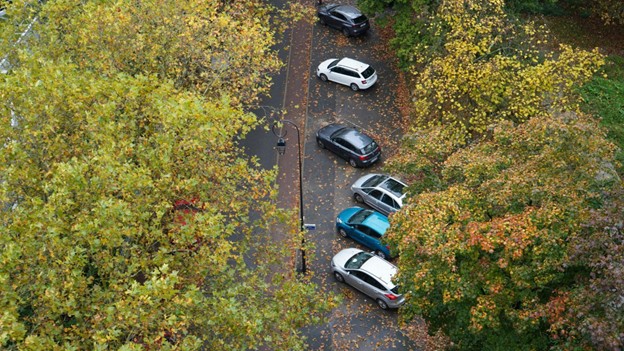As Sydney continues to grow, accommodating vehicles in a dense and vibrant urban landscape is becoming more important than ever. We’re seeing a thoughtful shift in how the city approaches parking—one that prioritises smarter, more integrated, and sustainable solutions in step with the evolving needs of our communities.
Rethinking Traditional Parking in a Vertical City
Sydney’s geography, rising land values, and growing population make traditional surface-level car parks increasingly inefficient. In response, urban planners and developers are turning to multi-level, automated parking systems that dramatically reduce the space required per vehicle. These modern systems use vertical stacking and mechanical lifts to retrieve cars, removing the need for ramps or wide driveways. The result is not only space-saving but also more environmentally responsible, with reduced concrete use and a smaller construction footprint.
Smart Parking Technology Is Becoming the Norm
With mobile technology integrated into nearly every part of our lives, parking is naturally following suit. Across Sydney, we’re seeing more car parks and public spaces equipped with IoT sensors, real-time monitoring tools, and app-based systems designed to make parking easier and faster. Providers like Secure Parking are leading this transformation, offering a network of digitally connected car parks that let drivers find, book, and pay for parking from their phones—saving time and reducing stress in busy areas.
Here’s what that means for daily users:
- Live updates on available spaces
- Automated time tracking and enforcement
- In-app payment options
- Less time spent circling the block
Suburbs like Chatswood and airport precincts such as Mascot are already embracing this transformation, contributing to a more connected, efficient commuting experience.
Connecting Parking to the Bigger Picture
Today, parking is about more than just finding a spot—it’s about creating seamless connections within our transport ecosystem. Many new developments are aligning parking facilities with:
- Public transport routes
- Shared mobility hubs (like e-scooters and rideshare)
- EV charging stations
- Accessible entry points for people with mobility needs
This integrated approach encourages more sustainable travel habits and supports a city designed for convenience, not congestion. For instance, Park-and-Ride zones along Sydney Metro corridors now combine smart technology with better planning to reduce car use in the city centre.
Electric Vehicle Charging Is No Longer Optional
With electric vehicle adoption on the rise, infrastructure must evolve to support this shift. Across Sydney, we’re seeing more Level 2 and fast-charging stations in both public and private car parks. Many new builds now include EV-ready wiring in every bay to prepare for a fully electric future. Local councils and developers, supported by state government incentives, are working together to expand access to EV chargers—ensuring all commuters are supported, not just early adopters.
Smarter Parking, Greener Outcomes
Sustainability is central to Sydney’s urban evolution, and parking infrastructure plays a key role. Many newer projects now incorporate:
- Permeable surfaces to reduce runoff and support groundwater
- Solar-powered lighting and shade structures
- Motion-sensitive LED lighting systems
- Green rooftops and vertical gardens
Neighbourhoods like Alexandria and Zetland are leading the way, blending functional design with greener building practices to improve local livability and reduce environmental impact.
Doing More With Less Through Automation
Historically, parking was often overbuilt to avoid shortfalls. Today, technology allows us to better match supply to actual demand. With real-time usage data and efficient automated systems, we can reduce the number of spaces built—freeing up land for housing, parks, or community amenities. This shift benefits everyone: it lowers construction and maintenance costs, reduces heat retention from asphalt, and supports a more walkable city.
Sydney’s Data-Driven Parking Future
At the core of this transformation is real-time data. Using sensor networks and analytics, the city can now adapt parking supply to meet shifting demand—especially during peak times or major events.
In practice, this means:
- Better traffic flow around sporting venues and festivals
- Faster response to congestion in business districts
- Fewer emissions from idling or circling vehicles
By making parking smarter, we’re improving mobility for everyone—from daily commuters to visitors.
A Clearer Path for Urban Developers and Councils
For developers and local governments alike, the future of parking calls for flexibility, technology integration, and long-term sustainability. Forward-looking strategies should include:
- EV-ready infrastructure as standard
- Preference for compact, vertical parking solutions
- Real-time data tracking and analysis
- Integration with broader mobility planning
This isn’t just about solving parking—it’s about enhancing how we all experience the city.
Final Thoughts
Sydney’s parking challenges are evolving, and so are the solutions. By adopting smart systems, embracing sustainable practices, and designing with users in mind, we’re building infrastructure that aligns with the way we live, move, and connect. The future of parking in Sydney isn’t about more asphalt—it’s about better design, smarter systems, and a more seamless urban experience for everyone.



